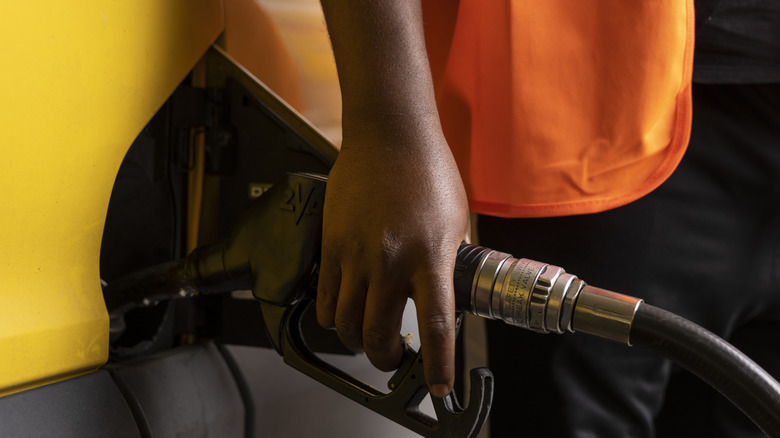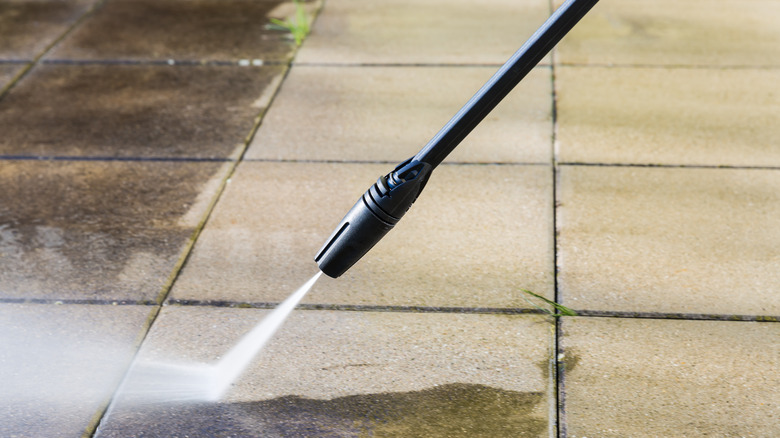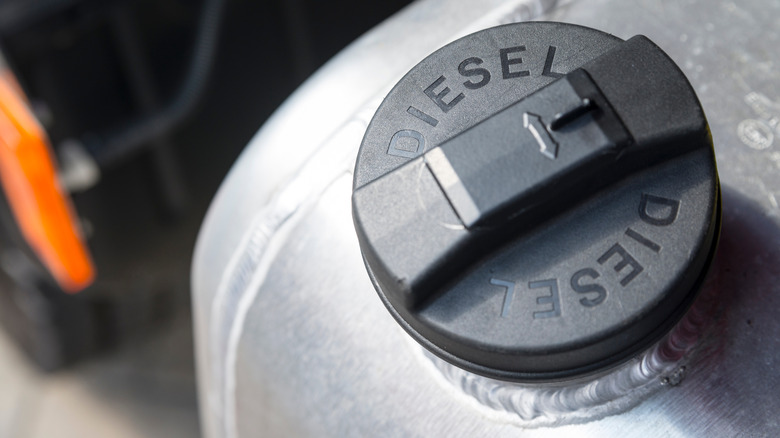What Really Happens If You Put Water In Your Gas Tank?
The internal-combustion engine is a complicated yet useful aspect of modern life. It is what enables the existence of many vehicles, airplanes, trains, and boats. And while many cars today are electric, the internal-combustion engine is still a go-to for many. The engine is made up of various parts and segments, such as an intake, a compression chamber, combustion, and an exhaust. As Energy Education explains, these parts rely on the ideal gas law, which basically means that rising temperatures can make gas expand from increased pressure.
Most gasoline-powered cars utilize an internal combustion engine. As Car and Driver relates, gasoline holds a lot of energy trapped within its molecular makeup. When gasoline is heated, this energy is released, which can then be harnessed by the engine. This works by the engine's pistons converting the gasoline's heat into something called torque, which is basically the force responsible for making the wheels of a car turn. Every time an engine piston pumps up and down, that's oxygen and fuel being mixed and ignited, giving the engine power to do its mechanical work.
But that raises the question: What would happen if something other than gas were put inside a combustion engine? For example, what would happen if water were put inside instead of gas? Would it be dangerous? Would it destroy the engine? Before these questions can be answered, we have to know about compressibility.
The properties of water make it incompatible with car engines
To put a long story short: Mixing water and gasoline in a fuel tank is a pretty bad idea. In fact, it just might be one of the most dangerous things that you can ever do to your vehicle, as Torque says. The reason for this is somewhat straightforward. Water, in nature, is usually not able to be compressed. Incompressibility is actually what makes water so great for everyday use. The United States Geological Survey explains these properties with a sandwich bag experiment. If water were inside a plastic bag with a straw poking out. and the bag was squeezed, the straw would simply be pushed out by the water. Compressibility means a change in density under proper conditions, such as extreme pressure.
This compressibility is what makes car engines work, essentially. As Energy states, when a fuel-air mixture is created, the pistons of an engine compress this violently before the mixture is then ignited to create energy. As water cannot easily be compressed this way, the engine would not be able to use it for its energy processes.
Putting water in a gas tank can be incredibly dangerous
The properties of water already make it a bad match with car engines, but water can destroy the engine as well. As Torque explains, a few things happen when water enters the fuel chambers. One, combustion is almost entirely prevented, depending on how much water is present. This means that the engine simply will not work if the situation is bad enough. Another thing is that crucial, expensive parts, such as the injectors and fuel lines, can become damaged by water, resulting in fairly costly repairs.
How would you know if water got into your gas tank? Bell Performance says that the engine might hesitate, or it might sputter consistently. It also might sputter, rev, and pop into a higher speed. It might refuse to start entirely, says Torque.
It is not terribly hard for water to get into a fuel tank accidentally, which is why car owners need to take diligent care. As Bell Performance notes, water can get into a fuel tank in a number of ways. Accidentally leaving the cap off during a heavy rain is one certain way it can happen. A poorly-fitting gas cap can also allow in unwanted moisture, says Torque. Still another way is if the gas station used does not have a proper water filter to keep water out of its gas supply. These things should be taken into consideration when protecting any car from water damage. Knowledge is power and knowing a lot can save responsible car owners from thousands in repair fees.


